In my “Hot Noodles in Gokayama” post the other day, I ended with this photo....
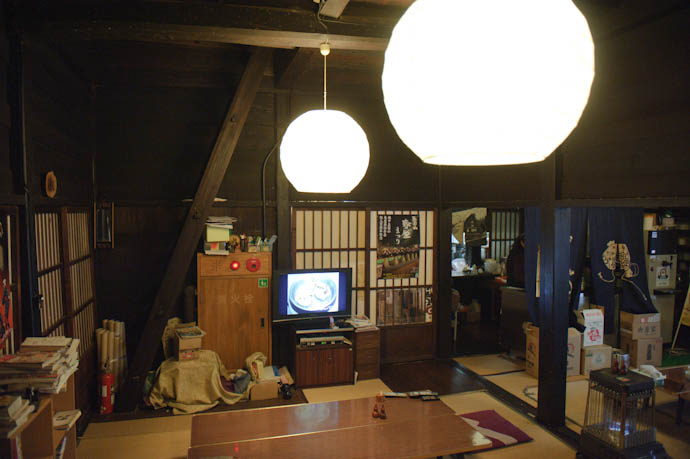
Nikon D700 + Nikkor 24-70mm f/2.8 @ 24 mm — 1/160 sec, f/2.8, ISO 1400 — map & image data — nearby photos
Interior of Restaurant “Yohachi”
Gokayama Village, Toyama Prefecture, Japan
... and posed the question as to what the tall slanted wooden brace was for. Of course, it's a set of stairs, but I thought the incredible steepness might throw some off.
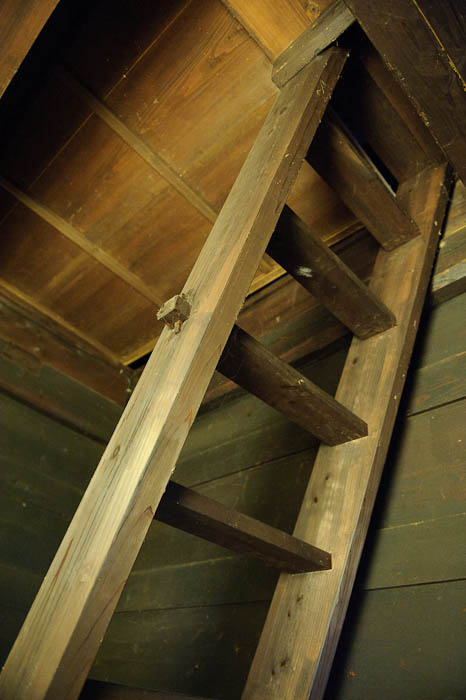
Nikon D700 + Nikkor 24-70mm f/2.8 @ 24 mm — 1/25 sec, f/2.8, ISO 6400 — map & image data — nearby photos
Closer to a Leaning Ladder
than a set of stairs
The stringers on these are obviously new, but the house dates to the 1880s, and these stairs match perfectly the contemporary description in Japanese Homes and Their Surroundings by Edward Morse (published in 1886, based on observations made from 1877-1880). In it, he writes:
A stairway incorporated into the structure of a building and closed below I have never seen in Japan; nor is there any approach to the broad, low steps and landings or spiral staircases such as we are familiar with in American houses. If the house be of two stories the staircase assumes the form of a rather precipitous step-ladder; that is, it has two side-pieces, or strings, in which the steps, consisting of thick plank, are mortised. This ladder is so steeply inclined that one has to step sideways in ascending, otherwise his knee would strike the step above. Rarely is there any convenience to hold on by: if present, however, this consists of a strip of wood fastened to the wall, or a rope is secured in the same way. The front of the step is open, — that is, there is no riser; but if the back of the steps face an open room, then slats of wood are nailed on behind.
(My gratitude to Peter Barnes in Wales, my blog's resident botanist, for recommending this book to me. It's been a delight to read, and I will be posting about it sometime soon.)
The only difference with these stairs is that there is no wood nailed on to the room-facing back, because the houses in Gokayama Village – as I mentioned in the introduction – are built without nails. Similar to the construction in the big wooden gear I once posted about, all of the steps are mortised into the risers, but four of them extend partway through to allow a linchpin to hold the riser fast.
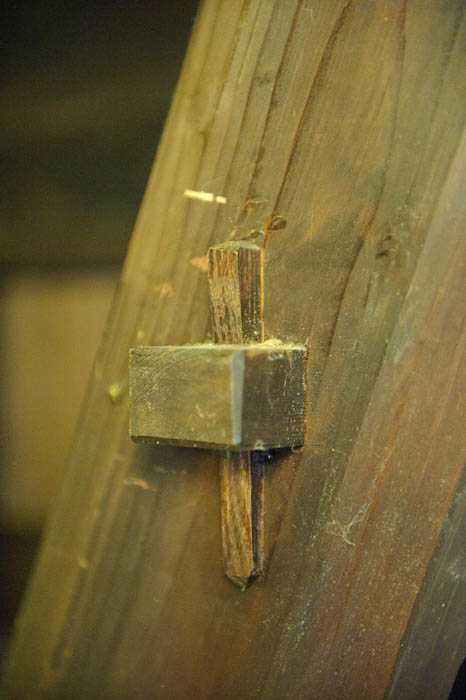
Nikon D700 + Nikkor 24-70mm f/2.8 @ 70 mm — 1/40 sec, f/2.8, ISO 6400 — map & image data — nearby photos
Pegged
One could dismantle the stairs in very short order: just knock out the four wooden pins and pull the riser away. I don't suppose this would happen often; perhaps only when moving the house or repairing the stairs, so maybe every hundred or so years? I don't know.
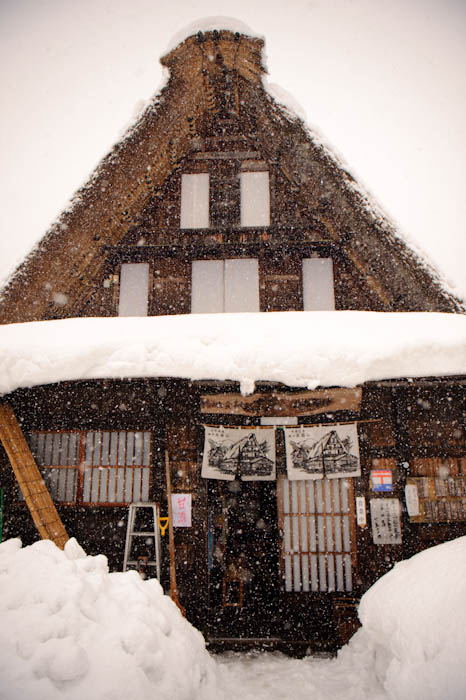
Nikon D700 + Nikkor 24-70mm f/2.8 @ 24 mm — 1/640 sec, f/2.8, ISO 200 — map & image data — nearby photos
“Yohachi”
— the best soba I've ever had —
Back outside, Anthony again reveled in the snow.
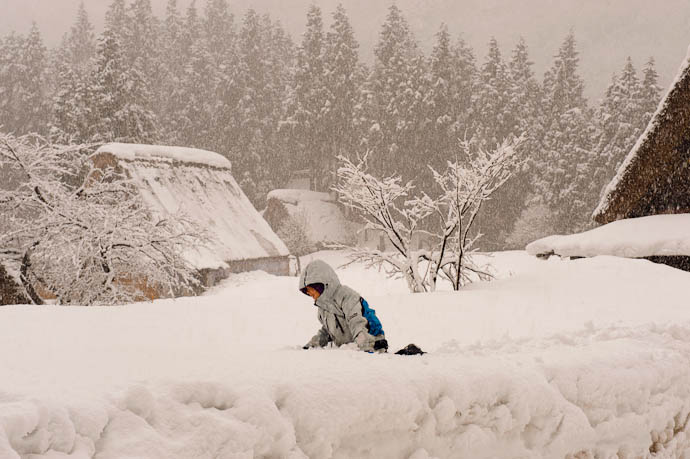
Nikon D700 + Nikkor 24-70mm f/2.8 @ 62 mm — 1/125 sec, f/10, ISO 200 — map & image data — nearby photos
Just Outside the Restaurant
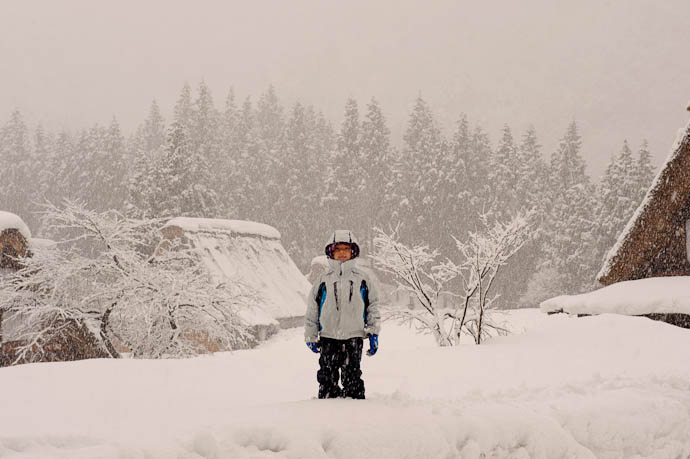
Nikon D700 + Nikkor 24-70mm f/2.8 @ 56 mm — 1/125 sec, f/10, ISO 200 — map & image data — nearby photos
Posing for a Photo Op
If you’ve been to any of the castles in Japan that are not recreations (I forget which were rebuilt and which were not but…) you’ll see that the higher you go, the stairs get steeper to foil attacks from sword-wielding bad guys below. Also the floor right below the top floor is half-height so no attacker could wield a full-length katana. Tangentially related to steep stairs 🙂
For what it’s worth, I hadn’t twigged that it was a staircase – well done Owin Thomas ! Whilst the exteriors of these houses are beautiful, it is fascinating to see such details of what’s inside, too.
I am pleased to learn that you are enjoying the book: obviously I need to read it thoroughly…